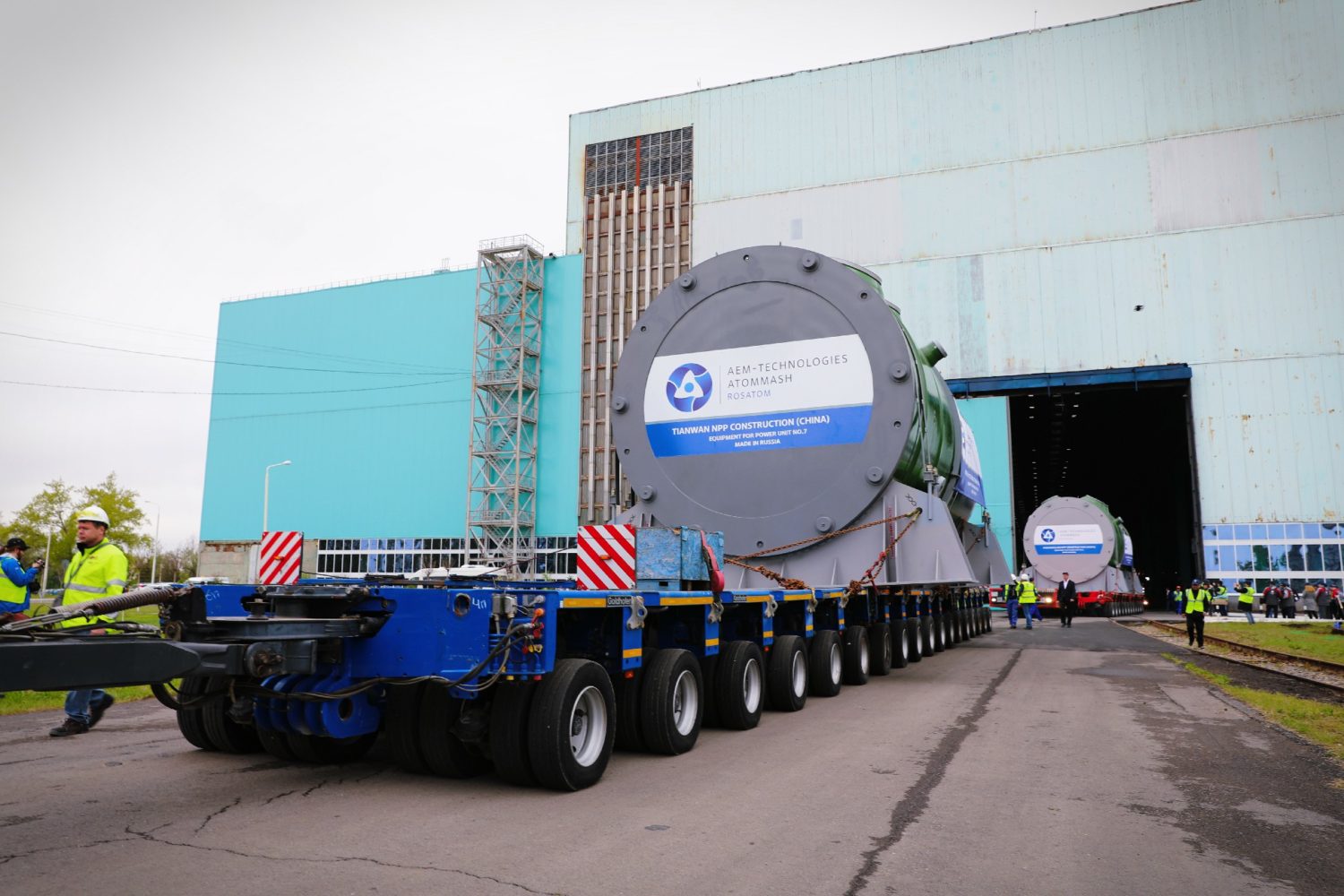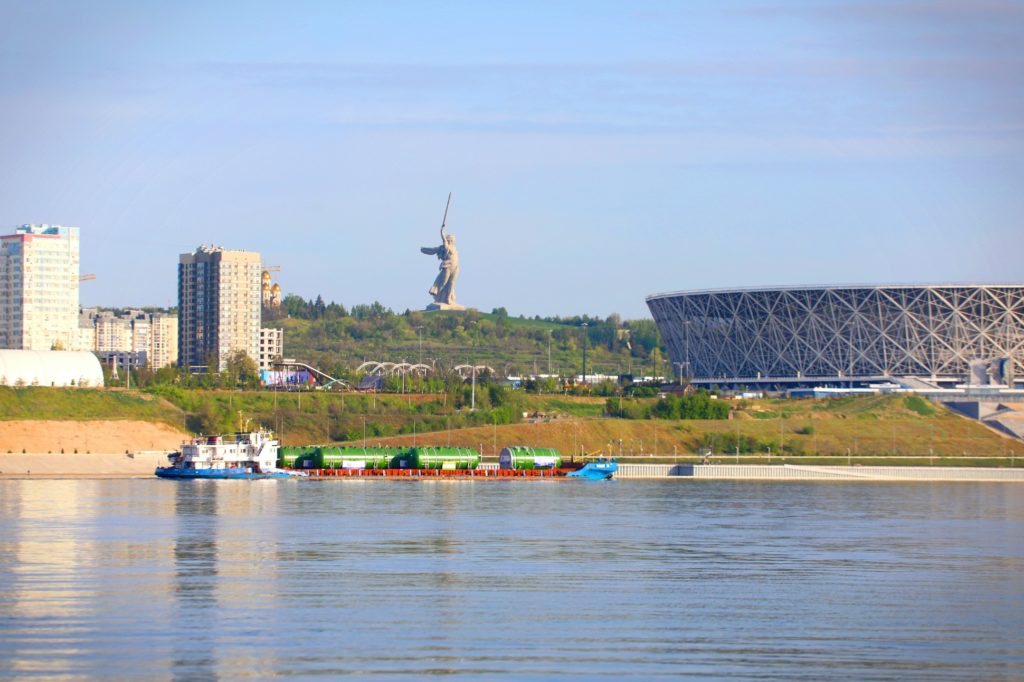
Reactors Come in Two
back to contentsIn late April, Atommash (part of Rosatom’s power engineering division AtomEnergoMash) shipped two sets of core equipment — two reactors and eight steam generators — for the nuclear power plants. This was the first time in the history of the global nuclear industry that such a scope of equipment had been shipped from one manufacturing site.
Preparations in advance
It is but natural that Atommash started to prepare for such strenuous work in advance. The task was approached in a comprehensive and multi-dimensional manner: production facilities were upgraded and re-tooled, with manufacturing processes digitalized, business processes streamlined, and production teams re-skilled and enhanced.

Since 2018, Atommash has purchased and upgraded dozens of new welding and metal-cutting machines, testing and quality control devices. As an example, a 600‑ton CNC horizontal milling and boring machine with a 40‑meter long working table was put in operation in 2020. With the machine tools upgraded, Atommash has sped up the machining of billets and vessels of steam generators and reactors.
In 2016–2022, the employee headcount increased more than one and a half times. Along with new employees hired, they were also trained under professional development programs. Mentoring and proactive training techniques were used in conjunction with the production upgrade.
Atommash has also introduced 3D scanning to control the geometry of products and an information system to optimize in-plant logistics. The steam generator production flow uses simulation modeling to make production plans and schedules and monitor actual performance against them. Digital systems and solutions monitor the employee condition (movements, key health indicators, use of PPE, etc.).
Atommash also uses digital modeling tools: over 90 % of its products have 3D models and can be checked for assemblability. Production processes are managed through the Director’s Panel web application. This information system collects data on the key equipment utilization, monitors contract performance and fulfillment of the monthly production plans by section, and analyzes other performance indicators.
Efficient capacity management
It takes more than two years to manufacture equipment for a single reactor. This complex production process is managed through numerous critical control points. For instance, there are about 300 such points for a reactor pressure vessel. Only after one point is passed does the process move to the next one. These critical control points help assess equipment utilization and build an optimal plan based on the effective sequencing principle: after a product passes a manufacturing stage, another one can be taken in. The company’s production capabilities allow a number of processes to be run in parallel and several pieces of equipment to reach the final stage at a time.
Where the equipment went
One of the equipment sets went to India’s Kudankulam Nuclear Power Plant, to be installed at its Unit 5 under construction. The other went to China and is destined for Unit 7 of the Tianwan Nuclear Power Plant. The total weight of the cargo is 3,400 tons.
The Kudankulam NPP is located in the state of Tamil Nadu in Southern India. Four power units with VVER‑1000 reactors are currently under construction on the site. The Tianwan NPP is located in China’s Jiangsu Province. Rosatom is building two power units with Generation III+ VVER‑1200 reactors at Tianwan.
How the reactors were transported
First, the cargo was delivered by truck to a dedicated berth on the bank of Tsimlyansk Reservoir (Don River) in Volgodonsk. The trucks traveled only at night to avoid creating traffic jams. Municipal services had to block roads and cut power lines because of the cargo’s large size. The speed of the trucks was only 2–7 km/h.
On April 27 and 29, the cargo was loaded onto barges to be delivered to Saint Petersburg by river. The barges would cover 3,500 km and pass by the cities of Saratov, Samara, Kazan, Nizhny Novgorod, Shlisselburg and others.
In Saint Petersburg, the barges would go down the Neva River at night under the raised bridges. From there, the cargo would travel to the destination ports through the Baltic and North Seas, Gibraltar, Mediterranean Sea, Suez Canal, Red and Arabian Seas.
Setting new records
AtomEnergoMash will continue to set records in 2023. The companies of Rosatom’s power engineering division are planning to ship three more nuclear reactors (again from the Atommash site) and other key and auxiliary equipment for nuclear power plants and icebreaker reactors, as well as dozens of other items of equipment. All in all, AtomEnergoMash’s backlog of work includes contracts for the nuclear island equipment for 23 reactors in different countries, in addition to equipment for the LNG projects, shipbuilding, petrochemical, oil refining, steel-making and other industries.
AtomEnergoMash (AEM) is Rosatom’s power engineering division and one of Russia’s largest power machinery producers providing comprehensive solutions in design, manufacture and supply of machinery and equipment for nuclear, thermal, petroleum, shipbuilding and steel-making industries.




